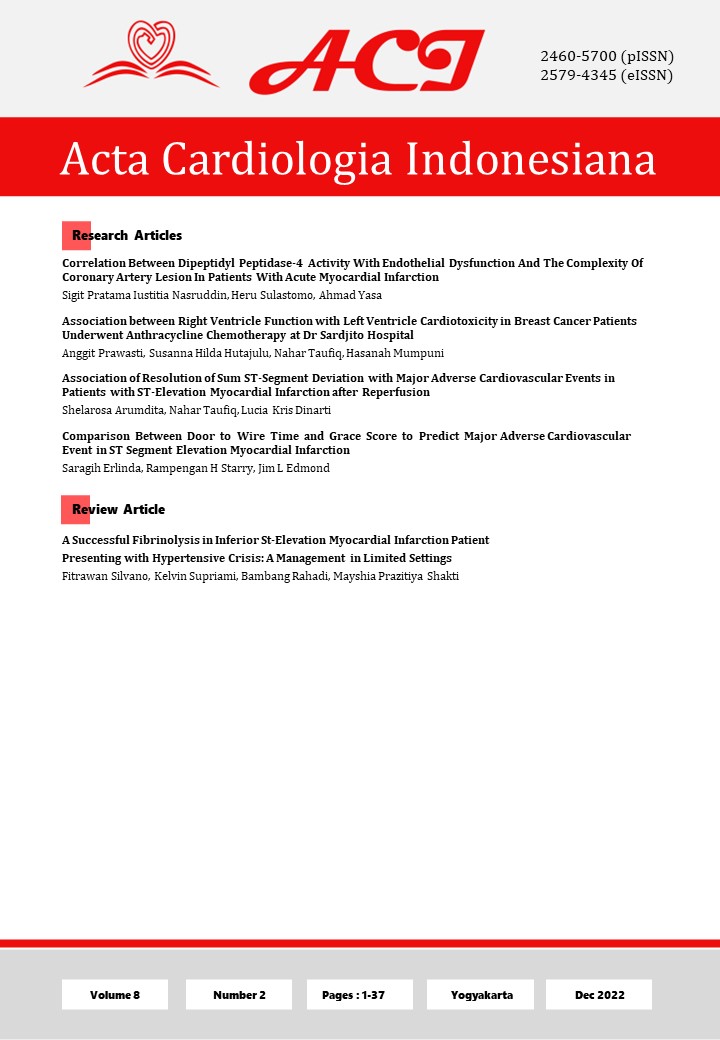A SUCCESSFUL FIBRINOLYSIS IN INFERIOR ST-ELEVATION MYOCARDIAL INFARCTION PATIENT PRESENTING WITH HYPERTENSIVE CRISIS: A MANAGEMENT IN LIMITED SETTINGS
Main Article Content
Abstract
Background: Prompt reperfusion is the first-line step for preventing mortalities in STEMI and fibrinolysis is one of the strategies. However, the benefit of fibrinolysis in inferior STEMI is still controversial. The presence of hypertensive crisis in STEMI provoked another reperfusion challenge.
Case Illustration: A 62-year old female presented to our ER with persistent 2-hour angina. She reported sudden symptoms of breathlessness and heavy retrosternal chest pain radiating to the back. In the ER, BP 200/130 mmHg, RR 20x/min, pulse 101bpm. A serial ECG within 1 hour post-admission revealed a prominent ST-segment elevation in II, III, and aVF leads. STEMI protocol and fibrinolysis following a prior antihypertensive therapy had been done. The pain relief and ≥50% reduction of ST-segment elevation within 30 minutes post-fibrinolysis, indicated a successful reperfusion.
Discussion: The current standard of care for any type of STEMI with onset <12 hours suggests performing pPCI within 120 minutes of transfer from non-pPCI centres. However, several studies found no advantage of transferring for pPCI over fibrinolysis in non-anterior STEMI. Our patient supported the latter, regardless of indicated for pPCI, she showed a successful outcome after fibrinolysis.
Despite being associated with a higher mortality rate, hypertensive crisis in STEMI should not hinder fibrinolysis, in which many Indonesian hospitals make it a contraindication. BP should be decreased to <160/110 mmHg before fibrinolysis. Our patient reached BP 150/94 mmHg.
Conclusions: In limited settings, fibrinolysis in a patient with inferior STEMI presenting with hypertensive crisis shows potentially successful reperfusion once the blood pressure is lowered.

